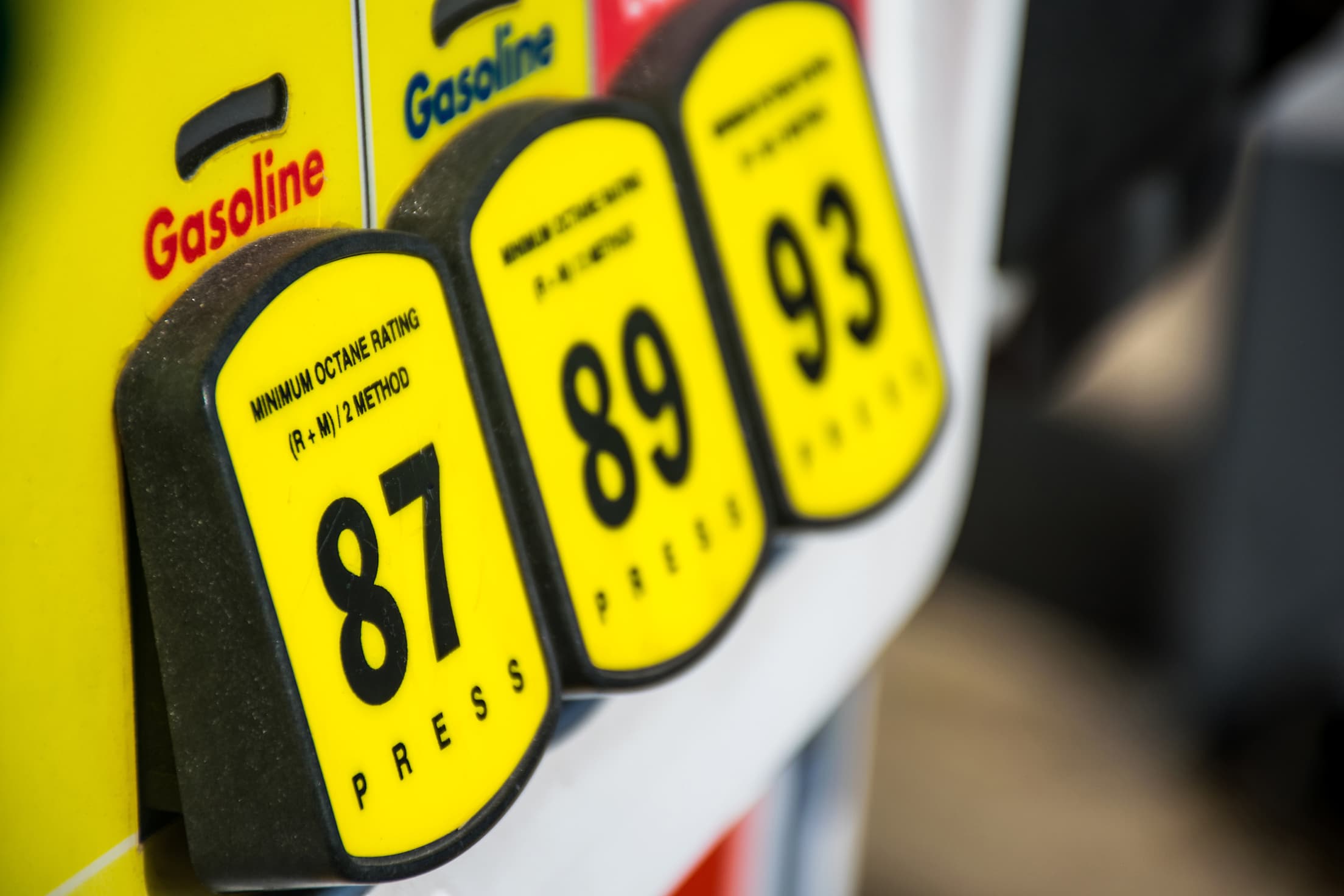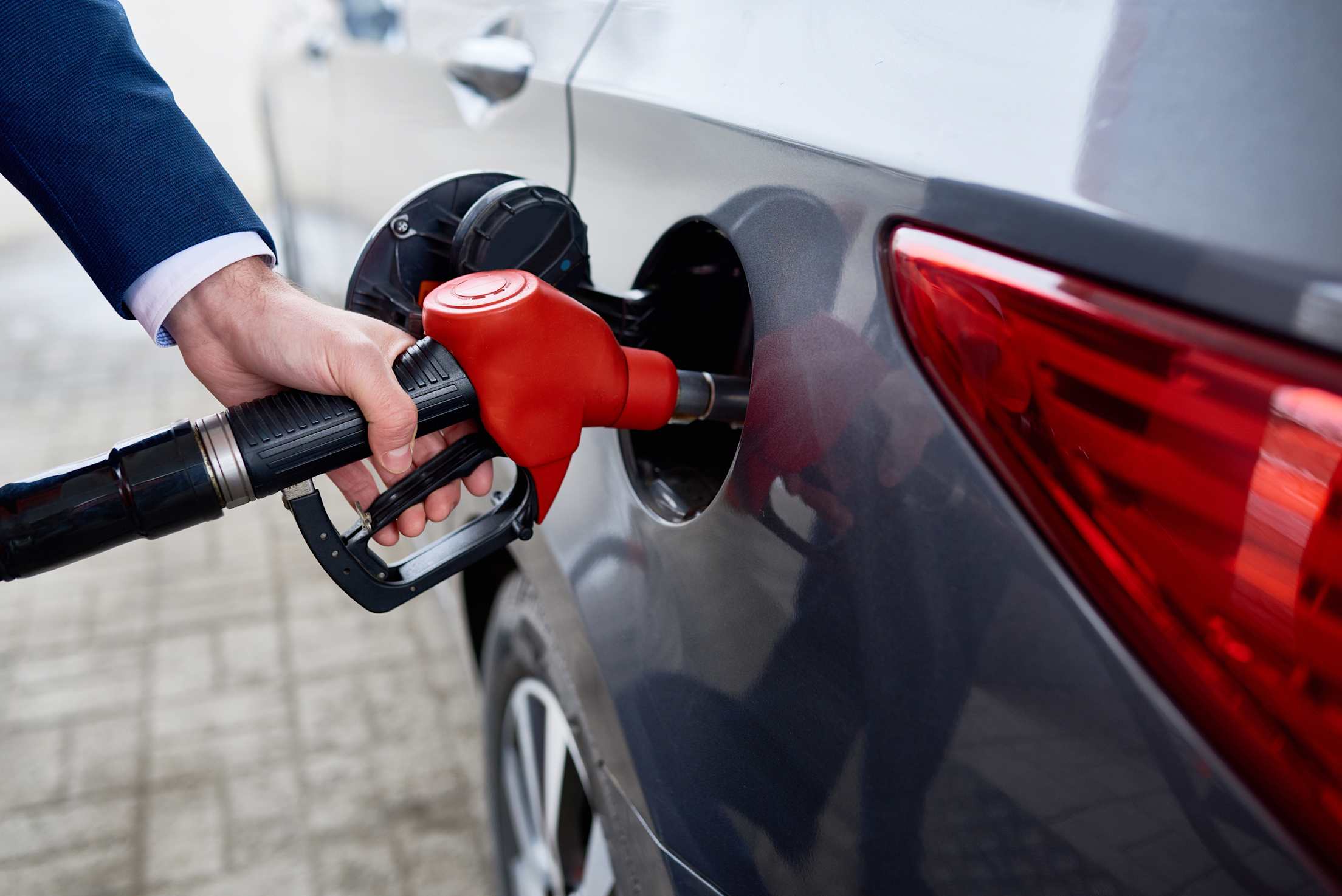
How to Choose the Right Fuel for Your Car
Is premium worth it? Is ethanol OK? Here’s what you need to know at the pump.

Have you ever stood at the gas pump and wondered which kind of fuel you should use? For example, it’s common to wonder whether you should upgrade to premium-grade fuel, to protect your engine or increase fuel efficiency, even if your car doesn’t technically require it. But does it actually help? Or are you pouring your hard-earned money into your gas tank for no reason? Here’s how the various grades of gasoline compare and how to decide which one you really need.
What is octane?
To understand the different kinds of gasoline, you first need to understand octane ratings.
When you step on the gas pedal, your car’s spark plugs ignite a precise mixture of air and fuel. Ideally, that mixture ignites only when the spark plug fires. However, in some cases that fuel-air mixture will ignite prematurely, due to the pressure and temperature inside the engine. That results in engine knock.
A fuel’s octane rating number represents its resistance to spontaneous ignition and burning. The higher the octane, the less likely it is to ignite prematurely and, so, the less likely it’ll create knock.
Contrary to some popular opinion, there's no correlation between octane rating and the quality of the fuel or the amount of energy or power it produces, says Michael Crossen, lead auto technician at Consumer Reports. A gallon of 87 octane and one of 93 octane have the same amount of potential energy—but the 93 option is more stable.

Types of Fuel
The different types of gasoline available at the gas station are typically categorized by their octane rating.
Premium
Premium fuel generally refers to 91- to 94-octane fuel. In some markets (such as California), 91 is the highest octane rating available. Premium fuel is commonly required by luxury vehicles, large SUVs, and trucks, as well as some turbo and sports cars. Any fuel that’s rated 91 octane or higher is sufficient for such vehicles.
Midgrade
The middle option, 89- to 90-octane fuel, is typically a mix of premium and regular fuel. It's recommended for some vehicles (including several from Stellantis, such as Ram trucks). Ask your mechanic if they would recommend it for your type of vehicle.
Regular
Also known as regular gas, 87 octane is used by most vehicles, including those that recommend—rather than require—premium fuel.
85 Octane
Not to be confused with E85 (explained below), 85 octane was initially developed for cars driven at higher altitudes, where a lower octane could be tolerated. But it shouldn’t be used in modern fuel-injected vehicles unless noted in your owner's manual.
E85
The mixed fuel E85 combines ethanol—up to 85%—with regular gasoline. It’s designed specifically for flex-fuel vehicles, which can use either 87 octane gas or E85. The latter tends to be cheaper but requires more fuel to drive a vehicle the same distance. Flex-fuel vehicles typically indicate that with yellow gas caps, stickers inside the fuel door, or exterior badges. Vehicles that aren’t expressly flex-fuel can not safely use E85. (Note that regular gasoline contains a small amount of ethanol.)
Diesel
Diesel engines operate differently from gasoline engines, particularly in terms of ignition. While gas-powered engines use spark plugs, diesel engines instead use compression to ignite fuel. That change requires special fuel. Diesel looks, smells, and feels different: It’s thicker and oilier, and the nozzle used to fill it typically is a different size, making it difficult to put into gas-powered vehicles.
Winter, Summer Blends
Complicating the picture even more, gas stations change fuels twice a year to summer and winter blends.
“Winter fuel has additional additives to help that fuel atomize properly in the cold weather,” says Crossen. “The fuel just doesn’t like to atomize when it’s cold outside, so they put some extra chemicals in there to help that happen.” Winter blend fuel tends to cost a little less than summer blend fuel, but it also offers slightly lower fuel efficiency due to its additives.
Summer blend is federally mandated from June 1 to Sept. 15; then, stations can transition to winter fuel. But that change doesn’t happen overnight. In the fall, for example, the winter blend rollout can start as early as Sept. 16, and continue through October. That transition happens automatically; you don’t need to seek out one or the other at the pump.

What’s the right fuel for your car?
“Best practice is [to] run the level of octane that the car is asking for,” says Crossen. You can choose to use a higher octane, but there’s no cost benefit in it. “You're spending more money per gallon of fuel, and you're not realizing those results back in any kind of fuel savings.”
Most gas vehicles operate on regular 87 octane fuel, though many manufacturers recommend premium. To find out if your car is in the latter category, check inside the fuel door for a sticker indicating that premium fuel is recommended or required.
If that sticker shows a book icon, it’s directing you to your owner's manual. But here things can get tricky: the manual may suggest different types of fuel, depending on the engine your vehicle has. If you’re unsure which type of engine your car has, look under the hood for the emission sticker. If you still have the original window sticker, the engine type and size should be listed there. If all else fails, you can call the parts department at a local dealership with your vehicle identification number; then, they should be able to tell you which kind of engine your car has.
Using premium fuel in vehicles that don’t require it doesn’t offer better fuel efficiency or engine protection, according to AAA and Consumer Reports testing. Crossen notes that the same applies in most circumstances when premium fuel is recommended but not required.
All that said, there are some isolated cases when a higher-than-necessary octane might be beneficial. For example, Crossen uses 89 octane when towing with his truck (which has over 300,000 miles on it) in summer heat. However, for the average car owner, there’s no general guidance for when a higher octane is helpful; when in doubt, ask your mechanic.
In addition to using the proper octane, it’s recommended that you fill up only at Top Tier gas stations. Top Tier fuel has additives that help minimize carbon buildup, among other things.
What’s the wrong fuel for your car?
Using the wrong fuel when filling up can be detrimental to your vehicle and your wallet. Be extra careful when you’re at the pump, even if you’re at a gas station you’re familiar with, to ensure you select the correct fuel every time you fill up. That said, mix-ups do happen.
Diesel in a Gas Car (or Gasoline in a Diesel)
This can lead to some very expensive repairs. The most common occurrence is putting regular gas in a diesel car, typically because the driver is unfamiliar with the vehicle. It’s more difficult to put diesel in a gas car because the pump often won’t fit correctly, the handle can be a different color (although that’s not a universal standard), and diesel smells different.
If you realize you used the wrong fuel before restarting the car, don’t turn the key; instead, have your vehicle towed to a mechanic. They’ll drain the fuel and clean out the system, which will minimize costly repairs. If you don’t notice your mistake and start driving, “you’re going to have drivability problems very quickly,” says Crossen, “if it even continues to run at all.” Pull over and get the car towed. You may need to have the in-tank pump, high-pressure pump, injectors, and other parts fixed or replaced.
Regular Gas in a Premium Vehicle
If you’re in an area without premium fuel, or if you made an error when filling up, putting regular gas in a premium fuel required vehicle isn’t as impactful as a diesel mix-up, as long as you take some precautions. Take it easy driving, add premium fuel to the tank when possible to balance things out, and don’t do it again. Some manufacturers offer an octane booster that can be added to the fuel tank as needed. Check your owner's manual to see if it offers any guidance.
E85 in a Non-flex-fuel Car
“Ethanol fuel is pretty volatile and pretty corrosive,” says Crossen. Regular vehicles have rubber components that high-ethanol fuel will break down, causing gummy and sticky contamination that can clog injectors and cause other problems. The fuel systems in flex-fuel vehicles, on the other hand, resist this corrosion. If you realize you’ve put E85 in a non-flex-fuel vehicle, don’t panic: One-time usage shouldn’t do permanent engine damage. The check engine light might come on, and you might encounter some drivability issues. But if you periodically top off the tank with regular fuel, gradually diluting the E85, you should be OK. Just try not to make the same mistake again.
Contaminated Fuel
If you fill up, start driving, and shortly after get a check engine light, or if your car starts running rough, misfiring, or stalling, and if you’re sure you didn’t put the wrong fuel in your vehicle, then it’s possible that the gas was contaminated. The common culprit is water, but occasionally other things get in there. It’s important that you let your mechanic know that these symptoms started just after filling up, so they don’t spend valuable diagnostic time looking for the problem, and can take a fuel sample to rule out fuel contamination. Crossen recommends making a habit of keeping the receipt from your most recent fill-up, in case an insurance claim is needed.
Filling up your car doesn’t have to be complicated. Just determine what kind of fuel it needs and pay close attention when pumping gas or diesel, and you should be in good shape.
Get quality auto repair and exclusive Member savings to keep your car road ready.